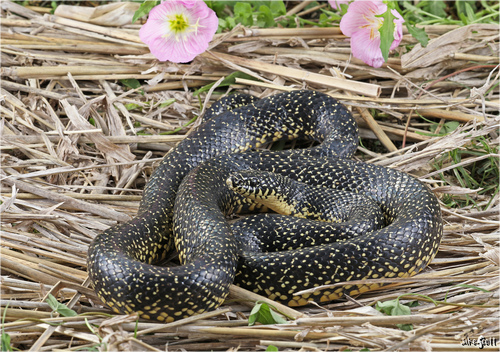
Speckled Kingsnake
The speckled kingsnake, with its dazzling pattern of yellow speckles, is a master of disguise and predation. Found across central U.S. habitats, it plays a vital role in controlling rodent and snake populations, showcasing nature's intricate balance.
20 years
Lifespan
Length: 1.2192 m
Size
Yellow, Black, White
Color
Low
Aggression
Least Concern
Conservation Status
Stable
Population Trend
Characteristics
Lampropeltis holbrooki, commonly known as the speckled kingsnake, is native to the central United States. It thrives in a variety of habitats, including forests, grasslands, and wetlands. This non-venomous snake is known for its striking pattern of yellow or white speckles on a black background. It is an adept constrictor, preying on rodents, birds, and other snakes, including venomous species.
Distribution Range of the Speckled Kingsnake
Lampropeltis holbrooki, commonly known as the speckled kingsnake, is native to the central and southeastern United States. Its geographical distribution includes states such as Missouri, Illinois, Iowa, Arkansas, Louisiana, Mississippi, and parts of Texas and Oklahoma.
Speckled Kingsnake's Habitat
Environmental Conditions
The speckled kingsnake typically inhabits areas with a temperate climate. It is found in a variety of environments including woodlands, prairies, marshes, and along riverbanks. They are often associated with areas that have some degree of moisture.
Ecological Niche
Lampropeltis holbrooki occupies a role as both predator and prey within its ecosystem. It preys on a range of small animals including rodents, birds, and other reptiles, and is known for its immunity to venom, allowing it to prey on venomous snakes. Its presence helps control the populations of these animals, maintaining ecological balance.
Copyright @ Nature Style Limited. All Rights Reserved.
 English
English